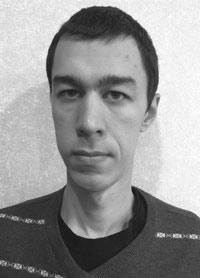Rating physical working capacity based on respiratory function
Keywords:
tests, physical fitness, problems, power, respiration, pulse.Abstract
Objective of the study was to identify approaches to rating physical working capacity based on the respiratory function.
Results and conclusion. For sports pedagogy, the subject of which is movements, it is advisable to distinguish from a large number of factors and responses that determine the physical working capacity level an indicator that would integrate multi-level responses. This indicator is energy supply: aerobic (oxidation) and anaerobic (primarily anaerobic glycolysis). It is the relationship between these two processes that determines the level of physical working capacity.
Numerous tests (since 2003) of people of different ages and physical fitness levels (from beginners to Olympic champions) have proved that the dynamics of the mentioned ventilatory capacity and ventilatory pulse indicators reflect the level of physical working capacity by demonstrating:
- the presence or absence of neuromuscular fatigue;
- aerobic or anaerobic type of energy supply in terms of load increment.
The accessibility of the proposed approaches to physical fitness tests provides ample opportunities for monitoring and managing recreational and sports activities.
References
Belotserkovskiy Z.B. Ergometric and cardiological criteria of physical working capacity in ath-letes. 2nd ed., sup.. Moscow: Sovetskiy sport publ., 2009, 312 p.
Breslav I.S., Nozdrachev A.A. Breathinng. Visceral and behavioral aspects. St. Petersburg: Nauka publ., 2005. 309 p.
Vashlyaev B.F. et al. Physical performance rating method based on dynamics of ratio of respirato-ry minute volume to intensity of increasing load. Russian Patent no. 2449727.
Vashlyaev B.F. et al. Scheme "Model of correspondence of physical load to moderate power zone". Russian Patent no. 111546.
Vashlyaev B.F. et al. Method for assessing the energy supply of work in terms of ratio of respira-tory minute volume to pulse rate. Russian Patent no. 115946.
Guba V.P., Shestakov M.P., Bubnov N.B., Borisenkov M.P. Measurements and calculations in sports student teaching. Study guide. 2nd ed. Moscow: Fizkultura i Sport publ., 2006. 220 p., il.
Karpman V.L., Belotserkovskiy Z.B., Gudkov I.A. Testing in Sports Medicine. Moscow: Fizkultura i sport publ., 1988. 208 p.
Korenberg V.B. Sports metrology: Dictionary and handbook] Study guide. Moscow: Sovetskiy sport publ., 2004. 340 p.
Mishchenko V.S., Pavlik A.S. Sensitivity and stability of reactions of respiratory system to hypox-ia to show adaptation to strenuous sports training. Sportivna meditsina. 2008. No.1. pp. 55-65.
Myakinchenko E.B., Seluyanov V.N. Development of local muscle endurance in cyclic sports. Moscow: TVT Divizion publ., 2005. 338 p.
Science and Sports. Tr. from Engl. Moscow: Progress publ., 1982. 270 p.
Nachinskaya S.V. Sports metrology. Study guide for stud. ed. study. institutions. Moscow: Akademiya publ., 2005, 240 p.
Aulik I.V. [ed.] Definition of physical performance in clinic and sports. Moscow: Meditsina publ, 1979. 195 p., il.
Rozhentsov V.V., Polevshchikov M.M. Fatigue during physical education and sports practices: problems, research methods. Moscow: Sovetskiy sport publ., 2006. 280 p.

Published
Versions
- 03-01-2022 (2)
- 01-11-2021 (1)

